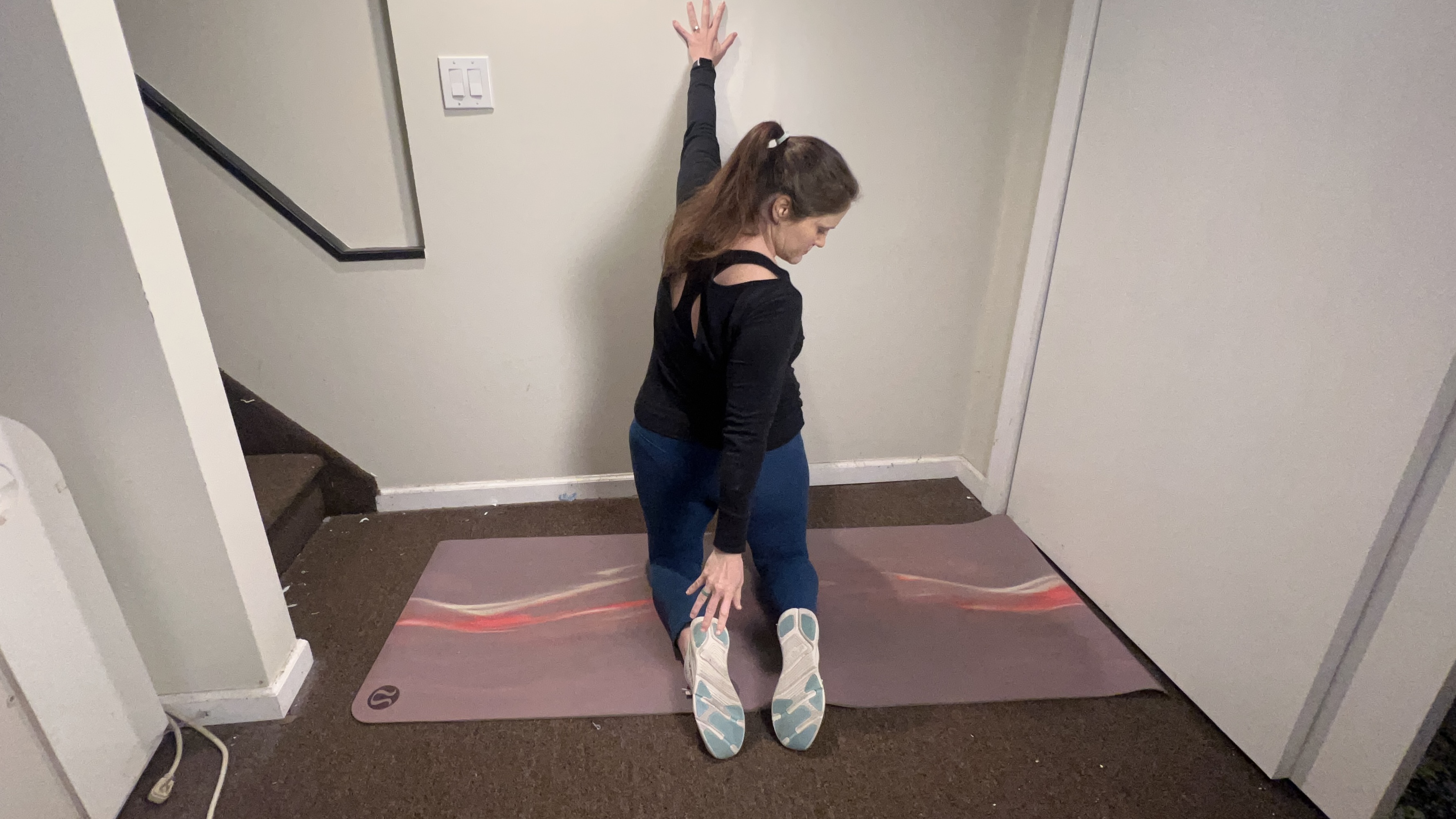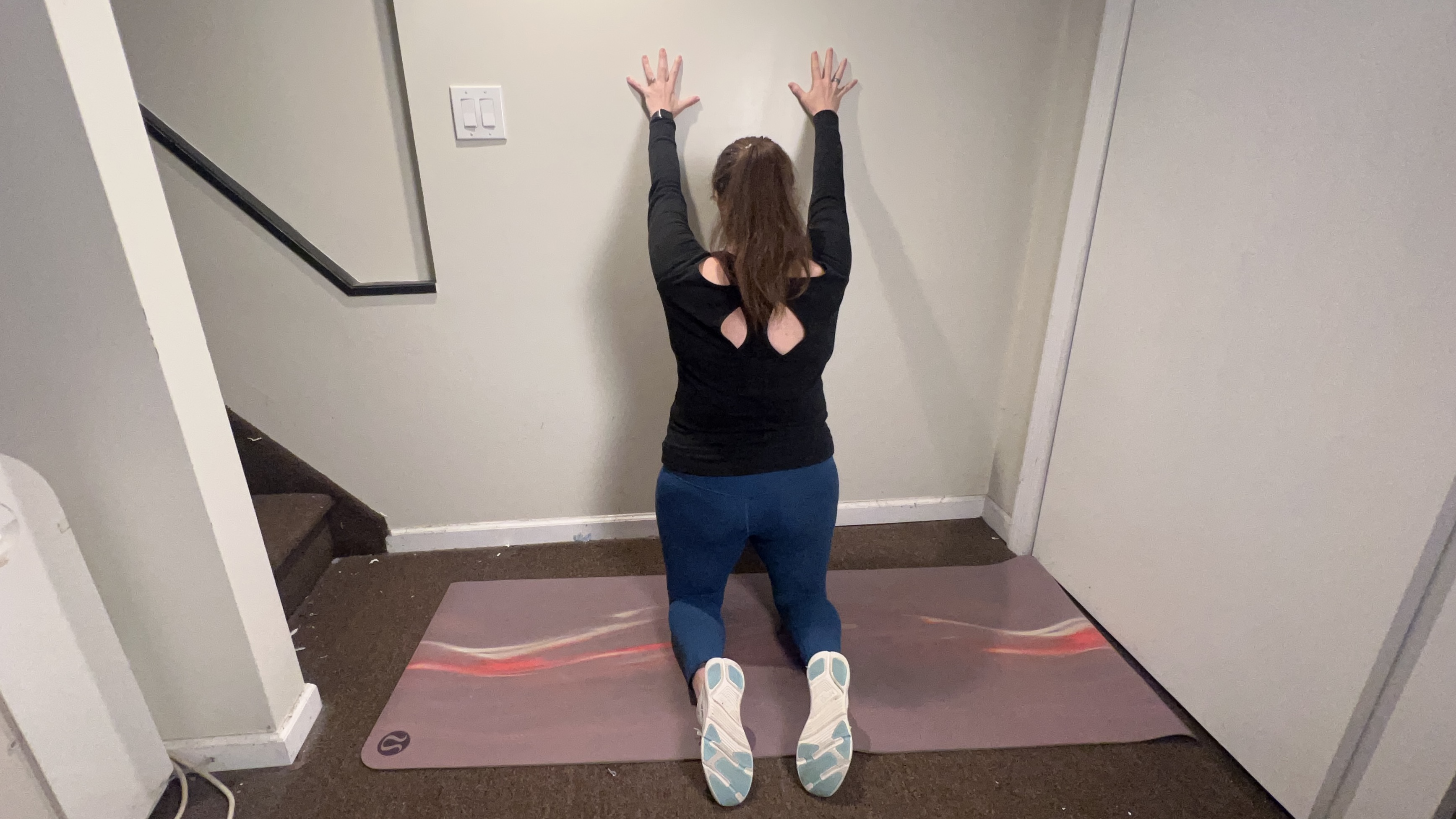
I’ve been a certified trainer for over a decade and I’ve found that one of the biggest hurdles my clients face is finding time to exercise. Most don’t have hours to spend in the gym, so they’ll often forgo mobility exercises and instead dive straight into their full-body dumbbell workouts. Unfortunately, many pay the price with tweaked backs and reduced range of motion.
My own back has been tight lately, and my usual mobility routine has gotten stale. Searching Instagram for an alternative, I found physical therapist Dr. Anthony Green’s go-to mobility move for addressing upper back tightness.
I tried it and found it was a game-changer—my entire spine felt opened up after this two-minute move. It now has a permanent spot in my warm-up routine.
How to do Dr. Green’s spinal mobility exercise
- Come to your knees about six inches away from a bare wall.
- Reach your arms above your head and place your hands against the wall. Engage your core and keep a neutral spine
- Slowly reach your left arm behind you toward your right heel, tapping the right heel with your left fingertips if possible.
- Return to the starting position then repeat on the other side.
You can also do the exercise while standing. Instead of tapping your heel, aim your fingertips toward the floor on the opposite side of the room. I did the exercise for two minutes, as suggested by Dr. Green.
What I found



My lower back felt better
Dr. Green bills this move as an upper back opener, and I definitely felt an improved range of motion in my thoracic (or upper) spine.
However, I think it had a bigger impact on my lower back. I’ve struggled with tightness and pain in the area for years, and this move helped reduce that. The squats and deadlifts I attempted after were strong, stable, and pain-free. So if you suffer from lower back issues, it’s likely that this movement could benefit you too.
My chest and shoulders also opened up
Despite working in the fitness industry, I still have to spend hours in front of my computer. All that sitting tightens not only my back but also my chest and shoulders.
After two minutes of practicing this move, I noticed that my pectorals (a muscle in the front of the chest) and my anterior deltoids (a muscle in the front of the shoulder) felt a lot looser. This could be due to anatomical factors—I have long legs and a short torso, so tapping my heels took considerable reach. Still, it’s a potential benefit, and if you’re extremely tight in those areas you may find that this movement helps.
My bench presses felt easier
Since this movement opened up my chest and shoulders, the bench presses I had scheduled the next day felt uncharacteristically easy and fluid. This alone was enough to convince me that the movement should be a permanent addition to my warm-ups.







